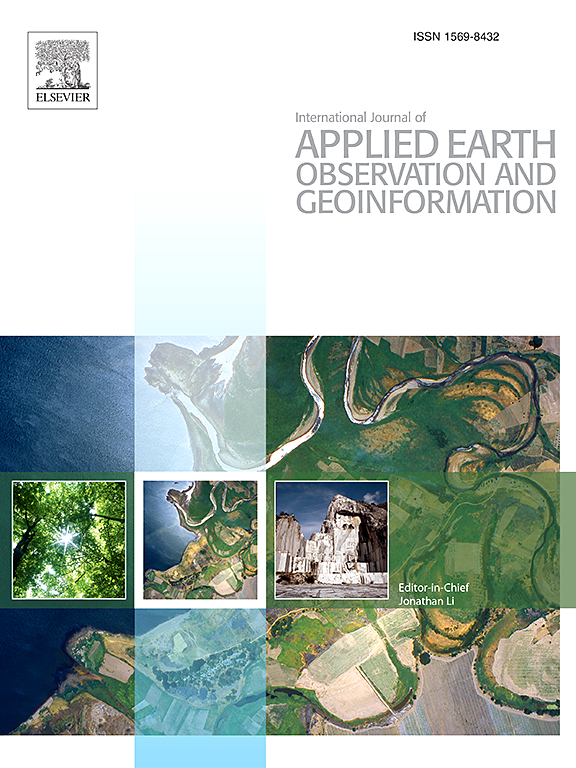Building the optimal hybrid spatial Data-Driven Model: Balancing accuracy and complexity
IF 7.6
Q1 REMOTE SENSING
International journal of applied earth observation and geoinformation : ITC journal
Pub Date : 2025-03-26
DOI:10.1016/j.jag.2025.104478
引用次数: 0
Abstract
Mapping environmental variables is crucial for natural resource management. Researchers and scholars have continually advanced this field with modern techniques such as Integrated Nested Laplace Approximation (INLA), Deep Learning (DL), and Graph Neural Networks (GNN) models. While effective, these models often present a significant challenge due to their black nature, which obscures the process of generating final maps from raw data. Recent theoretical breakthroughs have shown that white/grey-box models can achieve the same level of accuracy as these advanced techniques, debunking the belief that complex models are necessarily the most accurate. Based on these findings, we have developed a methodology that employs a series of statistical tests and data analytics to identify essential features hidden in spatial data in order to assess the predictive model (of white/grey kind) that best approximates underlying spatial processes. This methodology profiles the model that better adapts to the data, aiding in the selection of the simplest model that achieves the desired accuracy, functioning similarly to a recommender system for model selection. Furthermore, the set of permissible models includes only regressive-like ones to clarify the data’s contribution to map construction and can be applied to a wide range of datasets. By reducing complexity, this approach enhances the transparency of the model’s results. Real-world dataset demonstrates this methodology’s remarkable ability to produce highly accurate results.
构建最优混合空间数据驱动模型:平衡精度与复杂性
绘制环境变量图对于自然资源管理至关重要。研究人员和学者利用集成嵌套拉普拉斯逼近(INLA)、深度学习(DL)和图神经网络(GNN)模型等现代技术不断推进这一领域的发展。这些模型虽然有效,但由于其黑色特性,往往会对从原始数据生成最终地图的过程造成模糊,从而带来巨大挑战。最近的理论突破表明,白盒/灰盒模型可以达到与这些先进技术相同的准确度,从而推翻了 "复杂模型一定是最准确的 "这一观点。基于这些发现,我们开发了一种方法,利用一系列统计测试和数据分析来识别隐藏在空间数据中的基本特征,从而评估最接近潜在空间过程的预测模型(白盒/灰盒模型)。这种方法能剖析出更好地适应数据的模型,帮助选择最简单的模型来达到所需的准确度,其功能类似于模型选择的推荐系统。此外,允许使用的模型集只包括类似回归的模型,以明确数据对地图构建的贡献,并可应用于各种数据集。通过降低复杂性,这种方法提高了模型结果的透明度。真实世界的数据集证明了这种方法能够产生高精度的结果。
本文章由计算机程序翻译,如有差异,请以英文原文为准。
求助全文
约1分钟内获得全文
求助全文
来源期刊

International journal of applied earth observation and geoinformation : ITC journal
Global and Planetary Change, Management, Monitoring, Policy and Law, Earth-Surface Processes, Computers in Earth Sciences
CiteScore
12.00
自引率
0.00%
发文量
0
审稿时长
77 days
期刊介绍:
The International Journal of Applied Earth Observation and Geoinformation publishes original papers that utilize earth observation data for natural resource and environmental inventory and management. These data primarily originate from remote sensing platforms, including satellites and aircraft, supplemented by surface and subsurface measurements. Addressing natural resources such as forests, agricultural land, soils, and water, as well as environmental concerns like biodiversity, land degradation, and hazards, the journal explores conceptual and data-driven approaches. It covers geoinformation themes like capturing, databasing, visualization, interpretation, data quality, and spatial uncertainty.
 求助内容:
求助内容: 应助结果提醒方式:
应助结果提醒方式:


